Make this flavorful Cajun shrimp and sausage pasta recipe for dinner tonight. This mouthwatering Cajun-inspired dish features al dente pasta, succulent shrimp, and savory sausage, all perfectly seasoned with a zesty Cajun spice blend. With the addition of garlic, onion, bell pepper, and tomatoes, this Cajun shrimp sausage pasta offers a balance of Louisiana flavors in every bite.

Today, I would like to share an easy-to-follow recipe for Cajun shrimp and sausage pasta. Below, you'll find a complete list of ingredients, step-by-step cooking instructions, and some useful tips to bring about a delicious meal.
Jump to:
Easy Cajun Shrimp and Sausage Pasta Dish
This quick Cajun pasta recipe can be ready on your dinner table in about 30 minutes. It's not only simple to make but also incredibly flavorful, guaranteed to satisfy your cravings and leave you wanting to make it again and again.
Pair this pasta entree with a refreshing tomato and cucumber salad and some warm dinner rolls to round out a complete meal.

Ingredients
To make a Cajun shrimp sausage pasta recipe at home, here's a list of essential ingredients you'll need:
- Shrimp. It is recommended to use raw shrimp that are peeled and deveined but with the tails still intact. Keeping the tails on not only adds visual appeal to the dish but also enhances the flavor of the pasta.
- Sausage. I recommend using cooked Andouille sausage. This particular type of sausage is known for its smoky, spicy, and savory flavors, which are essential components of Creole cuisine. The Andouille sausage will add a depth of taste.
- Garlic and Onion. I incorporated garlic and onion to infuse a rich umami flavor. These aromatic ingredients also help to add depth and complexity to the cajun pasta sauce.
- Pasta. I opted for Linguine, but feel free to use any long pasta variety such as spaghetti or fettuccine. These types of pasta work well in absorbing the sauce's flavors.

- Tomato. To achieve a velvety smooth sauce in the Cajun shrimp sausage pasta recipe, I recommend using finely chopped/crushed tomatoes.
- Cream cheese. I used cream cheese for a rich and creamy sauce. It adds a velvety texture and balances the spiciness of Cajun seasoning.
- Cajun spice blend, smoked paprika, cayenne pepper, brown sugar, and black pepper. I used a combination of Cajun spice blend, smoked paprika, brown sugar, black pepper, and cayenne pepper to create a robust, smoky, and spicy taste. Some key flavors of traditional Louisiana cooking.
- Chicken Broth. I used low-sodium chicken broth for two reasons. First, I use the broth to deglaze the pan and incorporate some flavorful browned bits into the sauce. Second, it is a flavorful base for the sauce, enhancing its taste. Opting for low-sodium broth provided a balanced saltiness, there are other great flavors that shine.
How to Make Cajun Shrimp and Sausage Pasta
Below, you'll find a step-by-step cooking process for Cajun shrimp sausage pasta.
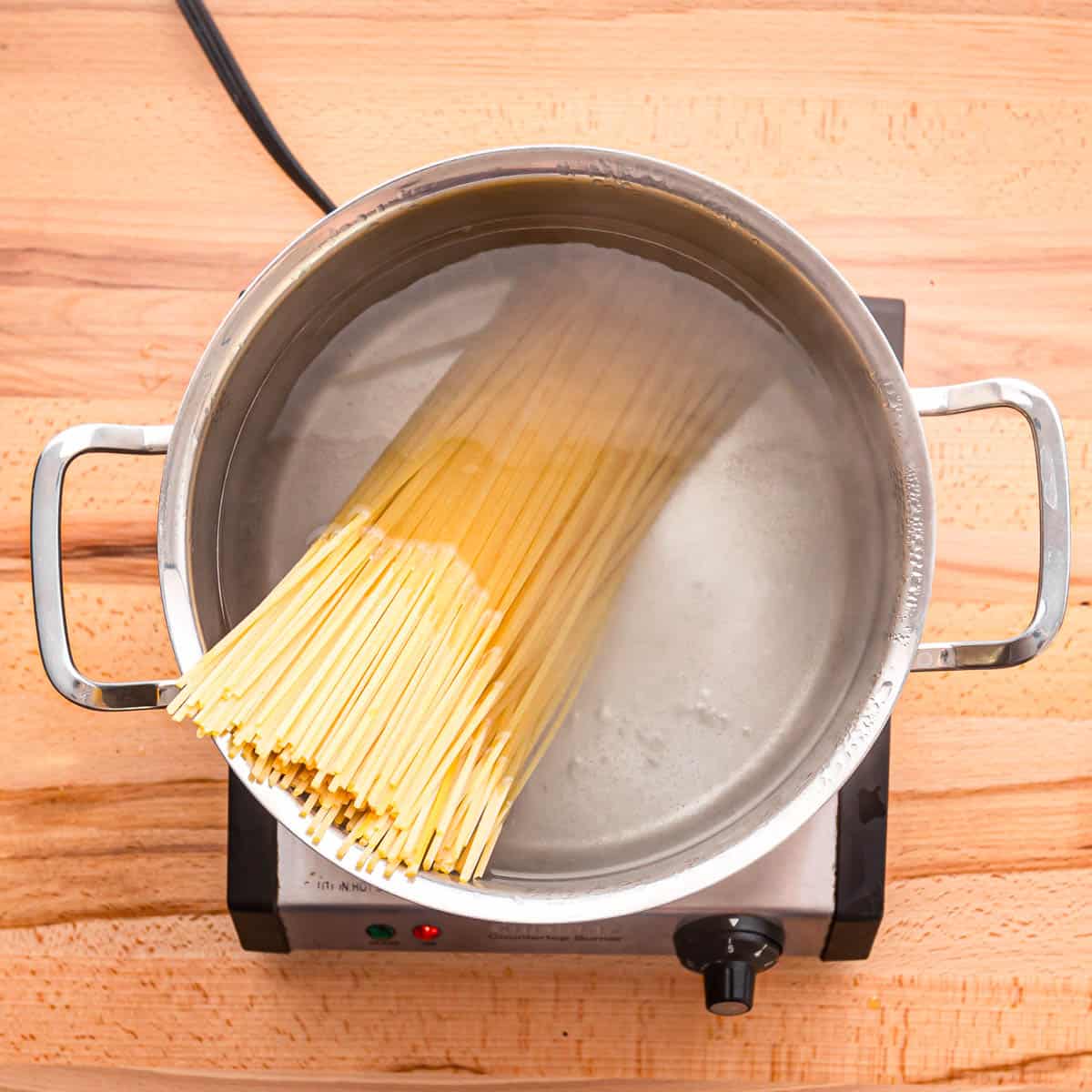
Step 1. Cook the Pasta. Bring a gallon of water to a boil in a large pot. Add ½ tablespoon of salt to season the water. Once the water is boiling, cook the pasta until it is al dente (firm to the bite), while you simultaneously prepare the sauce and other ingredients. Reserve at least ½ cup of pasta water before draining.

Step 2. Season the Shrimp. Start by seasoning the raw shrimp with a generous amount of Cajun spice. Make sure to coat them evenly for maximum flavor.

Step 3. Cook the Shrimp.
- In a skillet heat oil over medium-high heat
- Add the seasoned shrimp and cook them until they turn pink. This process usually takes about 2-3 minutes. Be careful not to overcook them, as shrimp can become tough if cooked for too long.

Step 4. Brown the Sausage. After removing the shrimp from the skillet, continue by browning the sausage for about 1-2 minutes.

Step 5. Cook the Vegetables and Aromatics.
- Add a small amount of oil to the skillet and heat it over medium heat.
- Add the sliced onion and bell pepper to the skillet and cook for about 2-3 minutes, or until they have softened slightly. Stir occasionally to ensure even cooking.

- Once the onion and bell pepper are softened, add the minced garlic to the skillet. Stir and cook for about 30 seconds to 1 minute, or until the garlic becomes fragrant. Be careful not to burn it.

Step 6. Make Pasta Sauce.
- Add finely diced tomatoes and chicken broth to the skillet.
- Quickly scrape up any browned bits from the bottom of the pan. This process helps to incorporate the flavorful bits into the sauce.
- Bring the mixture to a simmer.
Step 7. Stir in Pasta.
- Add the cooked pasta to the skillet and pour in approximately ½ cup of reserved pasta water. Give everything a quick stir until the pasta is well combined with the sauce.
Step 8. Add the Sausage and Shrimp. Now, it's time to add the previously cooked sausage and shrimp back to the skillet. Stir them into the pasta and sauce until everything is well combined and heated throughout. This step ensures that the sausage and shrimp are evenly distributed and warmed up, enhancing the overall flavor of the Cajun shrimp sausage pasta.
Step 9. Add the cream cheese. Finally, remove the skillet from the heat and add the cream cheese to the pasta. Stir the pasta well until the cream cheese is fully blended into the sauce, creating a creamy and luscious texture.

Substitution and Variations
- Dairy. If cream cheese isn't your preferred choice, feel free to substitute it with heavy cream or half-and-half. In this recipe, approximately 4 ounces of cream cheese were utilized and can be substituted with ½ cup of heavy cream.
- Protein. This recipe is versatile and can be prepared with any protein of your choice. You have the option to replace the shrimp with chicken or use different types of sausages based on your personal taste and ingredient availability.
- Seasoning. The Cajun spice blend is packed with a variety of herbs and spices, making it unnecessary to add additional herbs to your pasta. You can always add them for some extra kick!
- Gluten-Free. To make this pasta gluten-free, simply substitute regular pasta with gluten-free pasta.
- Homemade Cajun spice blend. If you are unable to find store-bought Cajun seasoning, I have a homemade recipe for a Cajun seasoning with no-sodium-added that you can make at home.

Tips for Success
1. Use no-sodium or low-sodium chicken broth. To avoid overly salty Cajun pasta, make sure to exclusively use no-sodium or low-sodium chicken broth. This will help maintain the desired flavor balance without overwhelming the dish with a salty taste.
2. Go easy on the Cajun seasoning. Not all store-bought Cajun spice blends are the same. Some may have a lot of salt or different proportions of spices. That's why it's a good idea to start with a small amount of the spice blend. You can add more later if needed to control the salt and spice levels from the get-go, as it's hard to come back when there's too much added early on.
3. Reserve some pasta water. Remember to set aside some pasta water for later use in the sauce.

4. Cooking times may vary. Please note that cooking times may vary depending on factors like stove heat and ingredient sizes. Adjust the cooking time as needed.
5. Adjust the spicy level. If you prefer a milder flavor, you have the option to omit the cayenne pepper initially, as you can add it later according to your taste.
6. Room temperature cream cheese. Bring cream cheese to room temperature to make it easier to blend into the sauce smoothly and to prevent curdling. As a result, the sauce will have a smooth and creamy consistency and a balanced taste throughout.
7. How to adjust the sauce consistency. If the sauce is too thin, you can easily remedy it by adding more cream cheese. On the other hand, if the sauce turns out too thick, you can effortlessly thin it out by incorporating additional pasta water.
8. Canned tomatoes and sugar. I added just a little sugar to counter the acidity of the tomatoes. It's worth noting that some canned tomatoes can be quite acidic, so you might want to adjust the sugar amount in the sauce to suit your taste. I strongly suggest opting for high-quality canned tomatoes that have a milder acidity level.
9. Go easy on the salt. In this recipe, I omitted salt because the Cajun spice blend already contains a significant amount of sodium. If you prefer a saltier result, I suggest adding salt right at the end to avoid oversalting the pasta.
10. Do not overcrowd the skillet. Depending on the size of your skillet, you might have to cook the shrimp in multiple batches.
Storage
For safety reasons, it is important to discard any Cajun shrimp and sausage pasta that has been left at room temperature for over 2 hours, or for more than 1 hour when the temperature exceeds 90°F. If you need more detailed information, you can refer to this source.
To handle leftovers properly:
- Let the cajun shrimp and sausage pasta cool down completely before storing it.
- Place them in the refrigerator and consume them within 3-5 days.
- If you want to extend the storage time, you can freeze them for up to 3 months.
How to Reheat Cajun Shrimp Sausage Pasta
You can reheat this Cajun shrimp pasta in either a microwave or a saucepan. Here's how:
Here's how to reheat in the microwave:
- Place the Cajun shrimp and sausage pasta in a microwave-safe dish.
- If needed, add a small amount of broth or water to the dish to prevent it from drying out.
- Cover the dish with a microwave-safe lid or microwave-safe plastic wrap.
- Microwave the pasta on medium power, using short intervals (around 30 seconds) and stirring in between each interval.
- Once the pasta is heated through, give it a gentle stir to evenly distribute the sauce. Serve and enjoy!
To reheat on the stovetop:
- Transfer the Cajun shrimp and sausage pasta to a saucepan.
- If necessary, add a small amount of broth or water to the pan to maintain moisture.
- Cover the pan with a lid.
- Heat the pasta over medium-low heat, stirring occasionally until it is thoroughly heated.
- Once the pasta is heated through, stir it gently to ensure the sauce is evenly mixed. Serve and savor!
Whether you choose to use the microwave or saucepan, reheating this delicious Cajun shrimp pasta will make it just as flavorful and enjoyable as before.
I hope you'll enjoy this recipe and share it with friends! If you try it and don't mind, please leave me a comment and/or give this recipe a rating. Be sure to subscribe to receive weekly recipes and follow me on Pinterest.
📖 Recipe
Cajun Shrimp and Sausage Pasta Recipe
Equipment
- a deep sautepan (12 inch or larger)
Ingredients
- 1 pound shrimp, (peeled, deveined, tail on)
- 10 oz linguine
- 2 cajun-style andouille sausage links, (slice)
- 3 tablespoons olive oil
- 5 oz thinly sliced yellow onion
- 5 oz thinly sliced red bell pepper
- 1 tablespoon minced garlic
- 3 teaspoons cajun seasoning, (divided)
- 1 teaspoon ground smoked paprika
- ¼ teaspoon ground cayenne pepper
- 1½ cups low-sodium chicken broth
- ¾ cups finely crushed tomatoes, ( I used Mutti)
- 1 teaspoon brown sugar
- salt and black pepper, (to taste)
- 4 oz cream cheese, (cut into small pieces and bring it to room temperature)
Instructions
- Bring a gallon of water to a boil in a large pot. Add ½ tablespoon of salt to season the water. Once the water is boiling, cook the pasta until it is al dente (firm to the bite), while you simultaneously prepare the sauce and other ingredients. Reserve at least ½ cup of pasta water before draining.
- Season the shrimp with 1 teaspoon of Cajun seasoning and black pepper.
- Heat 2 tablespoons of oil in a skillet over medium-high heat. Cook the shrimp for about 2-3 minutes until they turn opaque. Transfer the cooked shrimp to a plate.
- In the same skillet, brown the sausage for 1-2 minutes. Transfer the sausage to a plate.
- Heat one tablespoon of oil in the same skillet over medium heat. Cook the onion and red bell pepper until they become softened.
- Add garlic to the skillet and cook for about 30 seconds until it becomes fragrant.
- Stir in 2 teaspoons of Cajun seasoning, smoked paprika, cayenne pepper, and brown sugar.
- Add tomatoes and broth. Quickly scrape up any browned bits from the bottom of the pan and bring the mixture to a simmer.
- Once the sauce is simmering, add the cooked pasta, pasta water, and sausage. Stir to combine.
- Add the cooked shrimp to the skillet and stir to combine.
- Remove the skillet from the heat and add cream cheese. Stir until the cream cheese is evenly incorporated and the sauce becomes smooth.
- Taste the sauce and adjust the seasoning (cajun spice blend, cayenne pepper, or salt) if needed.
Notes
- Depending on the size of your skillet, you might have to cook the shrimp in multiple batches and use more oil as needed.
- To prevent burning while sautéing the onion and bell pepper, you can add a small amount of broth to deglaze the pan and prevent sticking.
- Go easy on the Cajun seasoning. Not all store-bought Cajun spice blends are the same. Some may have a lot of salt or different proportions of spices. That's why it's a good idea to start with a small amount of the spice blend. You can add more later if needed to control the salt and spice levels from the get-go, as it's hard to come back when there's too much added early on. I have a homemade recipe for a Cajun seasoning with no-sodium-added that you can make at home.
- How to adjust the sauce consistency. If the sauce is too thin, you can easily remedy it by adding more cream cheese. On the other hand, if the sauce turns out too thick, you can effortlessly thin it out by incorporating additional pasta water.
- Canned tomatoes and sugar. I added just a little sugar to counter the acidity of the tomatoes. It's worth noting that some canned tomatoes can be quite acidic, so you might want to adjust the sugar amount in the sauce to suit your taste. I strongly suggest opting for high-quality canned tomatoes that have a milder acidity level.
- Go easy on the salt. In this recipe, I omitted salt because the Cajun spice blend already contains a significant amount of sodium. If you prefer a saltier result, I suggest adding salt right at the end to avoid oversalting the pasta.
- You can store the leftover Cajun shrimp pasta in an airtight container and refrigerate it for up to five days.

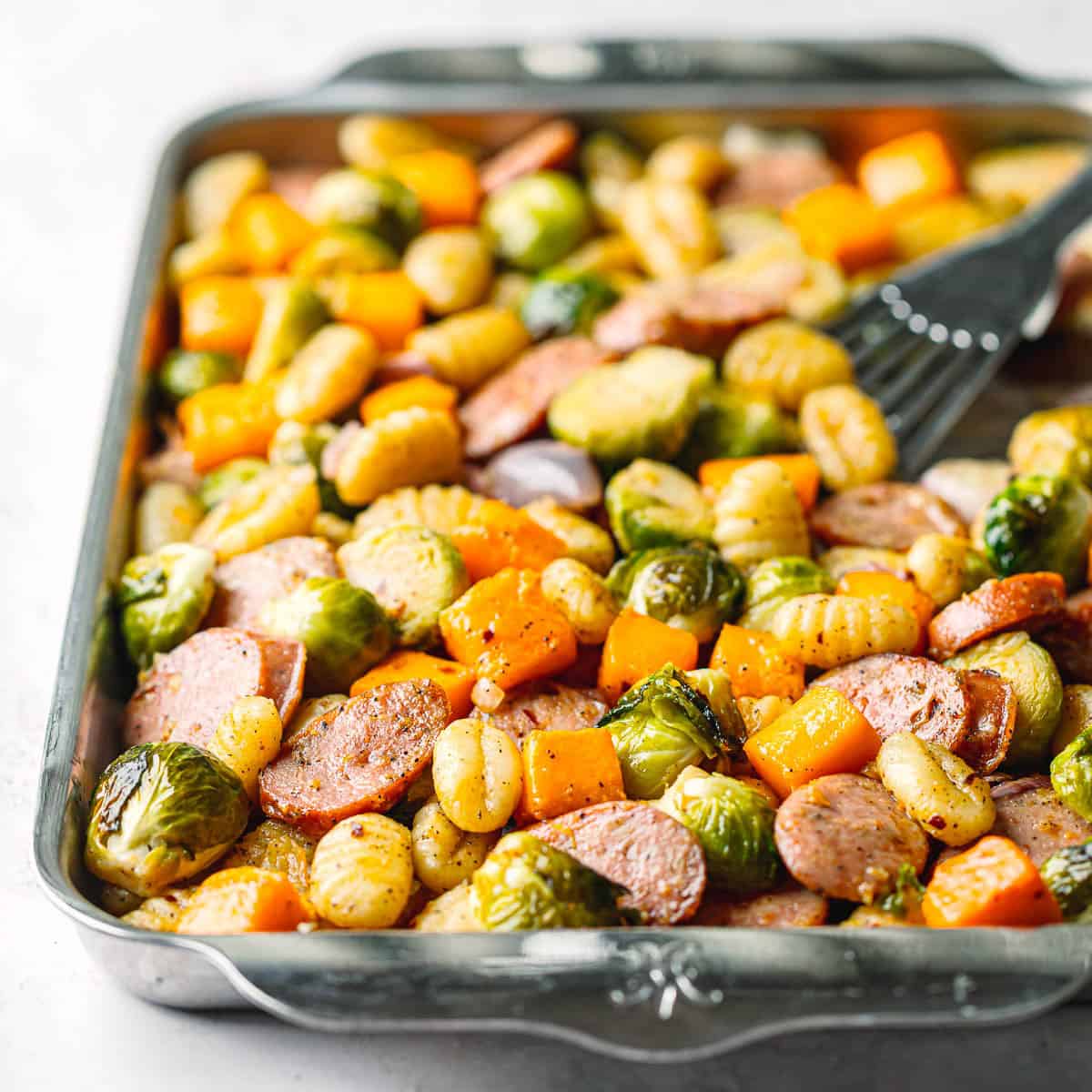


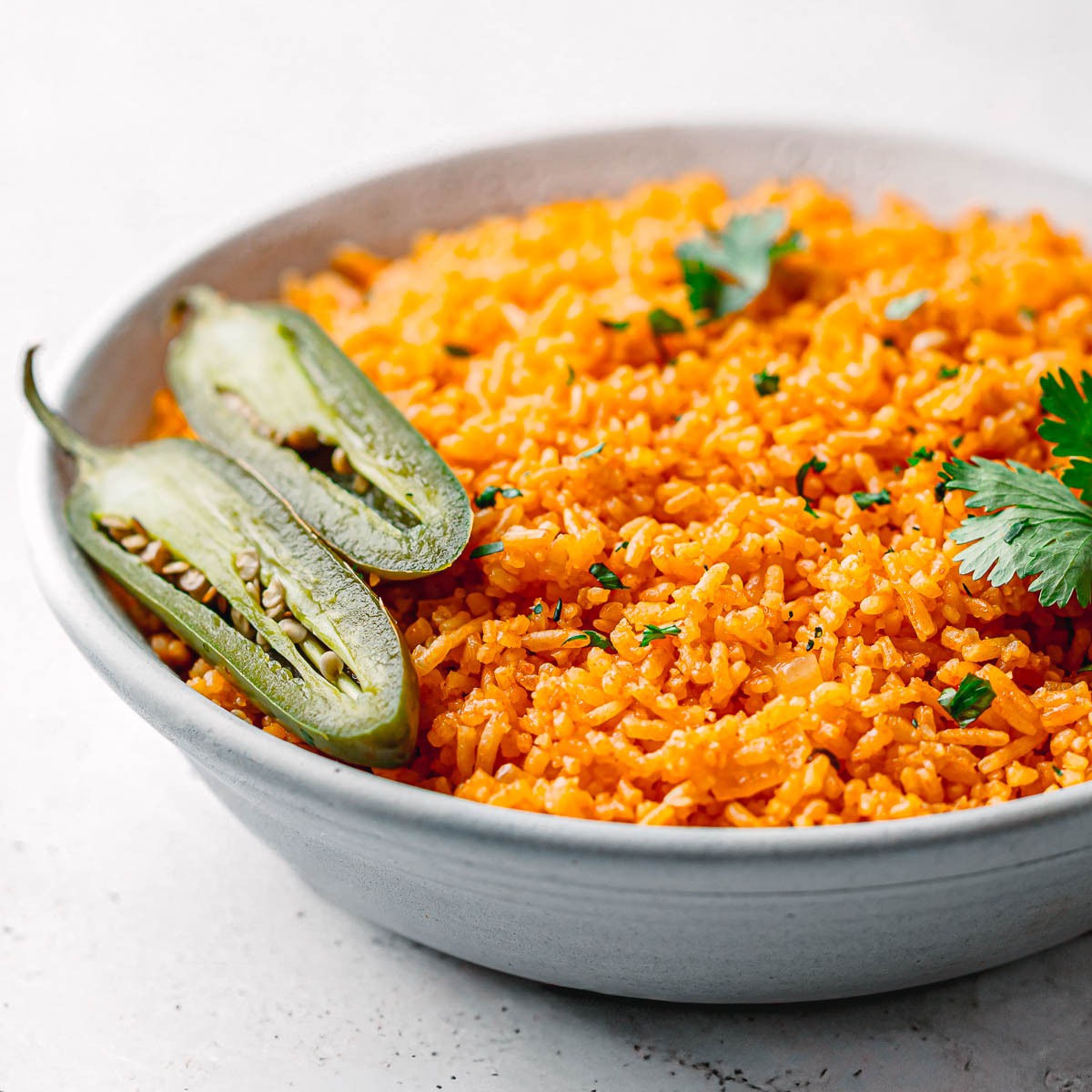



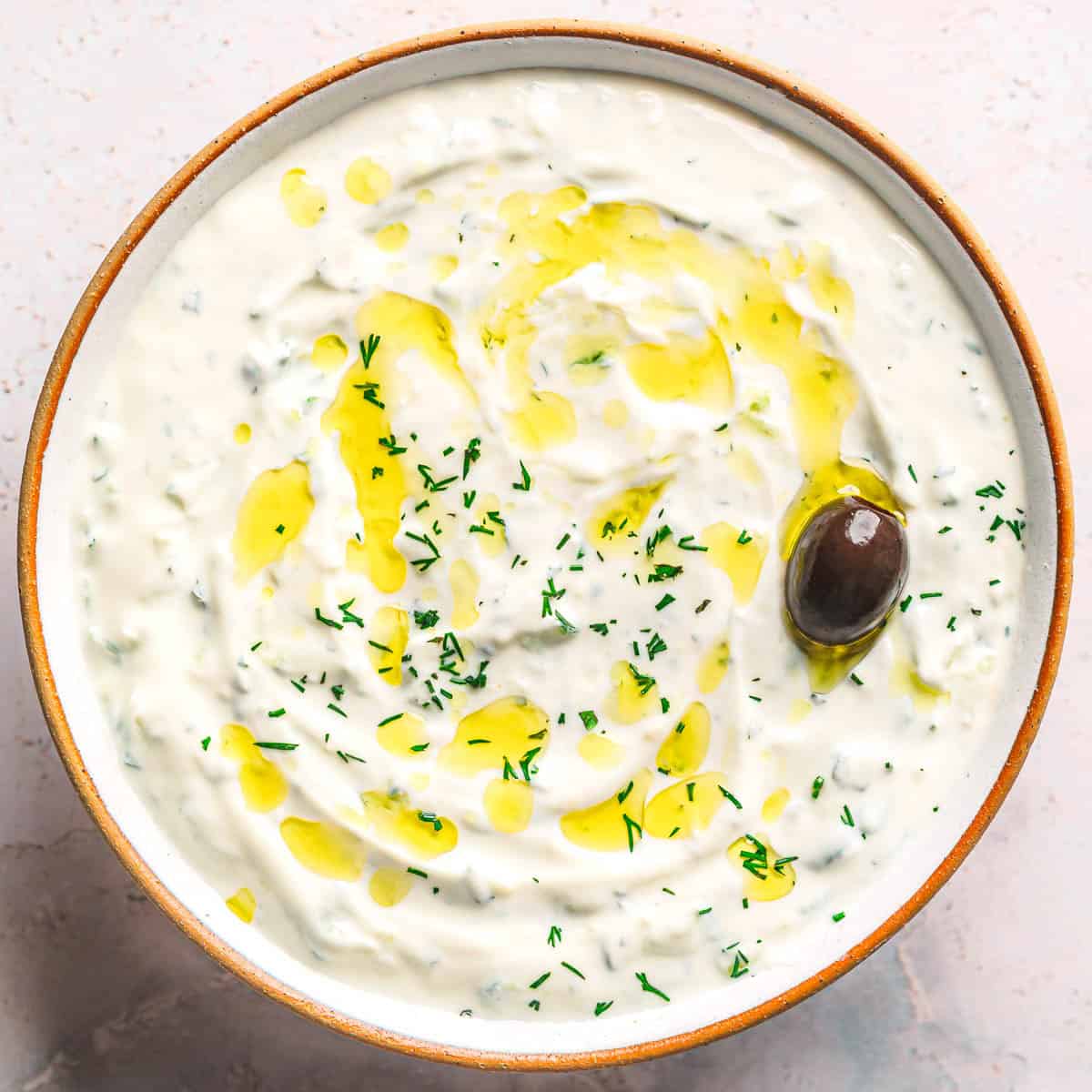
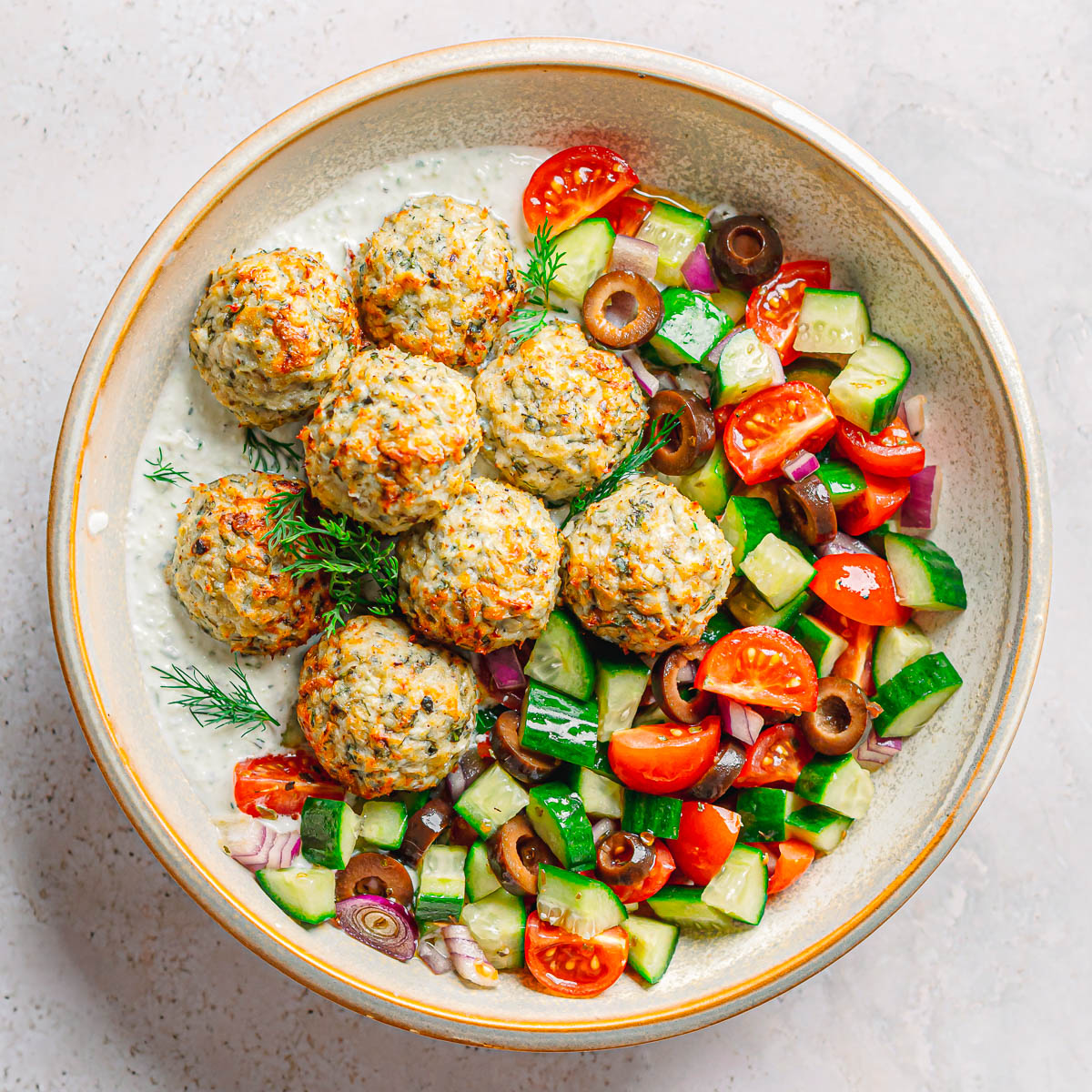









Comments
No Comments